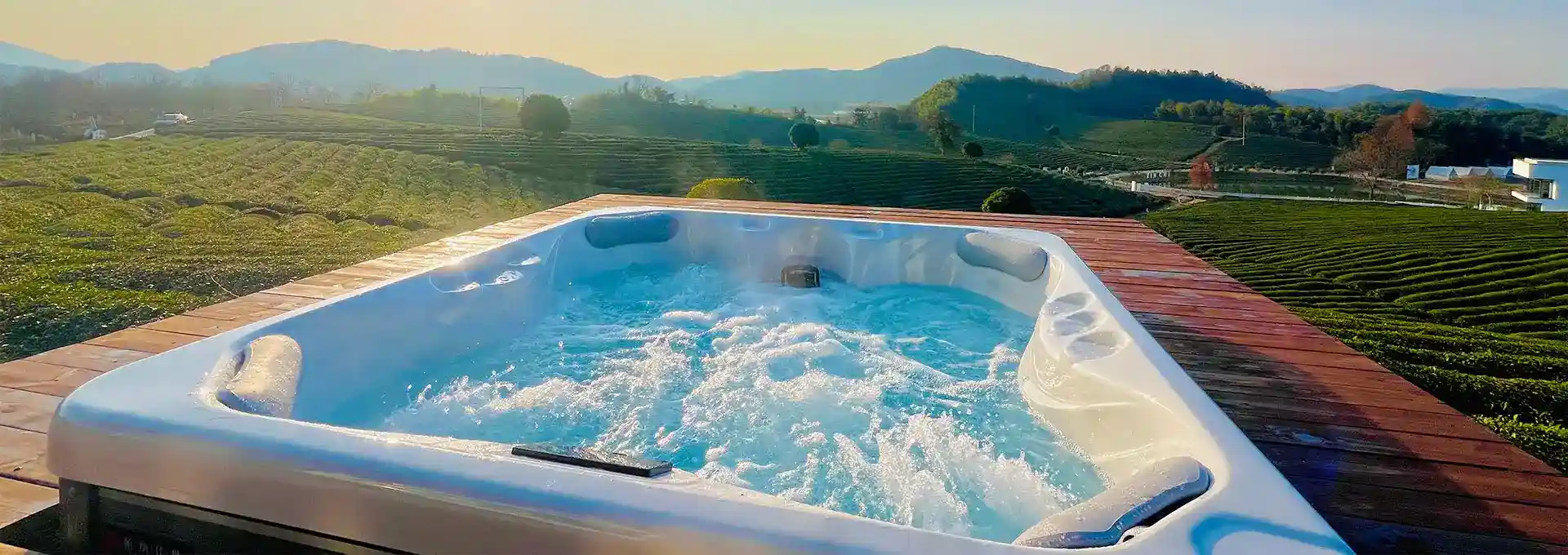Can You Put a Swim Spa Inground?
2024-09-23 15:48:42
Swimming pools have long been a symbol of luxury and relaxation, but for those seeking a more versatile and space-efficient option, swim spas have emerged as an attractive alternative. One question that often arises among potential buyers is whether it's possible to install a swim spa inground. The short answer is yes, you can indeed put a swim spa inground. This installation method offers a seamless integration with your landscape, providing the aesthetics of a traditional pool with the added benefits of a spa. In this comprehensive guide, we'll explore the ins and outs of inground swim spa installation, addressing common questions and concerns to help you make an informed decision.
What are the benefits of an inground swim spa?
Inground swim spas offer a unique blend of form and function, providing numerous advantages over their above-ground counterparts. One of the most significant benefits is the enhanced aesthetic appeal. By installing a swim spa inground, you create a sleek, integrated look that seamlessly blends with your outdoor living space. This installation method can significantly boost your property's visual appeal and potentially increase its value.
Moreover, inground swim spas offer improved accessibility. With little to no elevation difference between the surrounding area and the spa's edge, entry and exit become much easier, especially for those with mobility concerns. This feature makes inground swim spas an excellent choice for families with young children or elderly members.
Another advantage is the potential for customization. Inground installation allows for greater flexibility in terms of surrounding landscaping and decking options. You can create a truly personalized oasis by incorporating features such as built-in seating areas, water features, or even an outdoor kitchen adjacent to your swim spa.
Energy efficiency is another key benefit of inground swim spas. The earth surrounding the spa acts as natural insulation, helping to maintain water temperature and potentially reducing heating costs. This can lead to long-term savings on energy bills and a smaller environmental footprint.
Lastly, inground swim spas often provide a more immersive swimming experience. The lower profile creates a sense of swimming in a larger body of water, enhancing the overall enjoyment and effectiveness of your aquatic workouts.
How much does it cost to put a swim spa in the ground?
The cost of installing a swim spa inground can vary significantly depending on several factors. On average, you can expect to spend between $20,000 and $50,000 for the entire project. However, high-end installations with premium features and extensive landscaping can push the price tag well above $100,000.
The primary cost factors include:
1. Swim Spa Unit: The swim spa itself typically ranges from $15,000 to $35,000, depending on size, features, and brand.
2. Excavation: Digging the hole for your inground swim spa can cost between $1,500 and $5,000, depending on soil conditions and accessibility.
3. Concrete Shell: If you opt for a concrete shell to house your swim spa, this can add $5,000 to $15,000 to the project.
4. Electrical Work: Professional installation of the necessary electrical components usually runs between $1,000 and $3,000.
5. Plumbing: Proper plumbing installation can cost $500 to $1,500.
6. Permits and Inspections: Depending on your location, permits and inspections may cost $500 to $2,000.
7. Landscaping and Finishing: This can vary widely based on your preferences, from a simple surround to elaborate hardscaping, potentially adding $5,000 to $20,000 or more.
It's important to note that while the initial investment for an inground swim spa may be higher than an above-ground installation, many homeowners find the added benefits and aesthetic appeal well worth the cost. Additionally, the potential increase in property value can offset some of the expenses over time.
To manage costs effectively, consider obtaining quotes from multiple contractors and carefully plan your project scope. Some homeowners choose to complete the installation in phases, starting with the basic inground swim spa and adding landscaping features over time.
Remember that ongoing costs such as maintenance, energy consumption, and water treatment should also factor into your budget planning. While these costs are generally lower for swim spas compared to traditional pools, they're still important considerations for long-term ownership.
How deep should a swim spa be in the ground?
The depth of an inground swim spa is a crucial factor that affects both its functionality and safety. Typically, swim spas are designed to be between 48 and 60 inches (122 to 152 cm) deep. This depth range is considered optimal for a variety of reasons.
Firstly, it provides enough water depth for effective swimming and exercise. The resistance jets in a swim spa create a current that allows users to swim in place, and the standard depth ensures that swimmers can maintain proper form without touching the bottom too easily.
For installation purposes, the excavation depth will need to be slightly greater than the swim spa's depth to accommodate the necessary base and any required drainage systems. A typical installation might involve digging a hole that's about 6 to 12 inches deeper than the swim spa itself.
Here's a breakdown of considerations for swim spa depth:
1. Swimming and Exercise: The 48 to 60-inch depth range allows for comfortable swimming and a variety of aquatic exercises, including water jogging and resistance training.
2. Safety: This depth is generally safe for adults while still allowing most users to touch the bottom if needed. However, it's deep enough that proper safety measures, such as covers and fencing, are essential, especially if children will be using the area.
3. Hydrotherapy: For the spa portion of a swim spa, the depth allows users to sit comfortably with the water at chest level, ideal for hydrotherapy jets.
4. Installation Flexibility: This standard depth range allows for various installation options, including fully inground, partially inground, or even above-ground with proper decking.
5. Building Codes: Always check local building codes, as some areas may have specific requirements for inground water features.
6. Customization: Some manufacturers offer customizable depths or models with varying depths in different sections of the swim spa.
When planning your inground swim spa installation, it's crucial to work with experienced professionals who can assess your specific needs and site conditions. They can help determine the optimal depth for your situation, taking into account factors such as groundwater levels, soil composition, and local regulations.
It's also worth considering the intended primary use of your swim spa. If it will be used mainly for swimming and exercise, you might prefer a model on the deeper end of the spectrum. Conversely, if relaxation and hydrotherapy are your main goals, a slightly shallower model might be more appropriate.
Remember that proper drainage is essential for any inground installation. Your contractor should design a system that prevents water accumulation around the swim spa, which could lead to structural issues over time.
In conclusion, installing a swim spa inground is not only possible but can be an excellent choice for those seeking a versatile, space-efficient aquatic feature for their home. With careful planning and professional installation, an inground swim spa can provide years of enjoyment, exercise, and relaxation. By considering the benefits, costs, and technical aspects such as depth, you can make an informed decision that best suits your needs and enhances your outdoor living space.
For more information on hot tub installations and our products, please feel free to contact us at info@iparnassus.com.
References
1. Swim University. (2023). "Inground Swim Spas: Everything You Need to Know."
2. Aqua Magazine. (2022). "The Rise of the Swim Spa."
3. Pool and Spa News. (2023). "Inground vs. Above-Ground Swim Spas: Pros and Cons."
4. Home Advisor. (2024). "How Much Does It Cost to Install a Swim Spa?"
5. Swim Spa Guide. (2023). "Inground Swim Spa Installation: A Comprehensive Guide."
6. Backyard Design Ideas. (2024). "Incorporating an Inground Swim Spa into Your Landscape Design."
7. Energy.gov. (2023). "Energy Efficiency in Swimming Pools and Spas."
8. American Swimming Pool Association. (2024). "Safety Guidelines for Residential Pools and Spas."
9. Landscaping Network. (2023). "Inground Swim Spa Landscaping Ideas."
10. Aquatic Exercise Association. (2024). "Benefits of Aquatic Exercise in Swim Spas."



